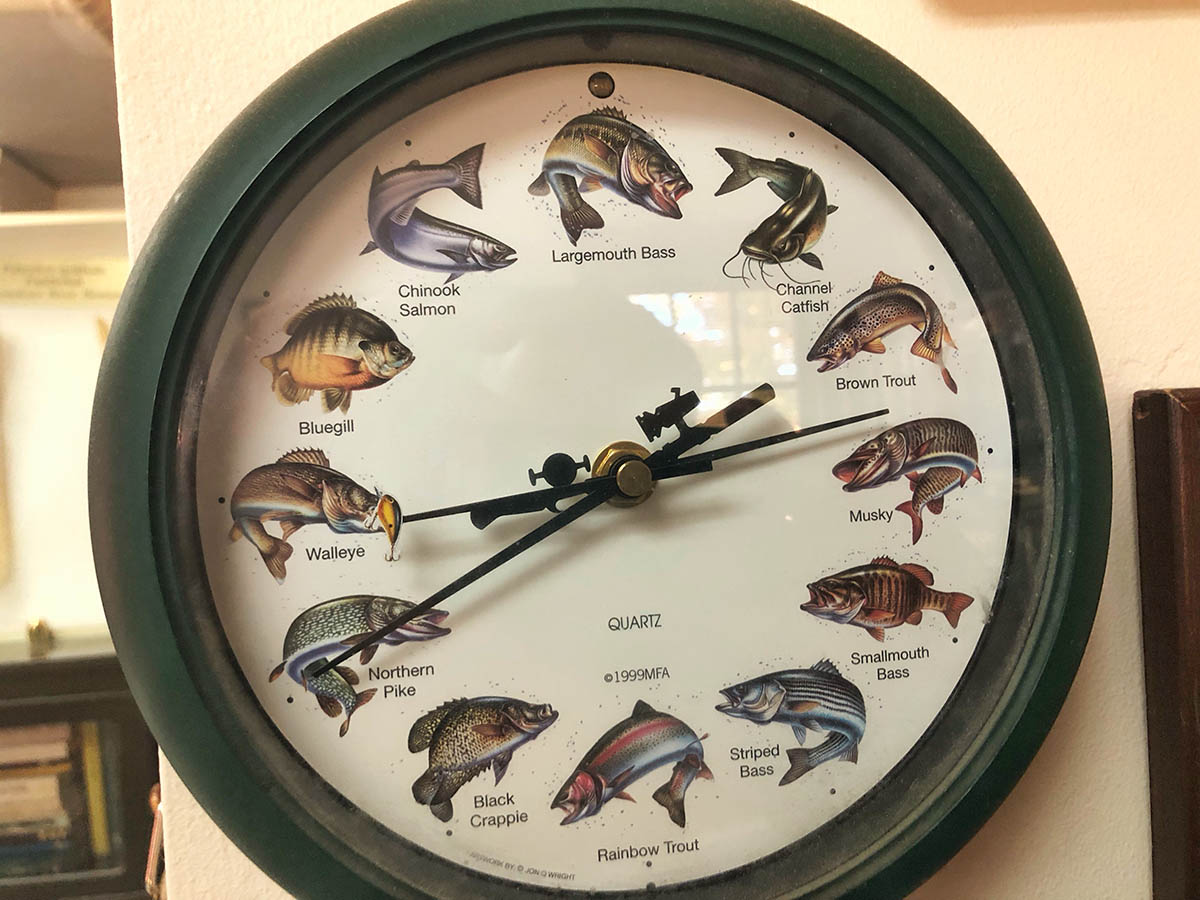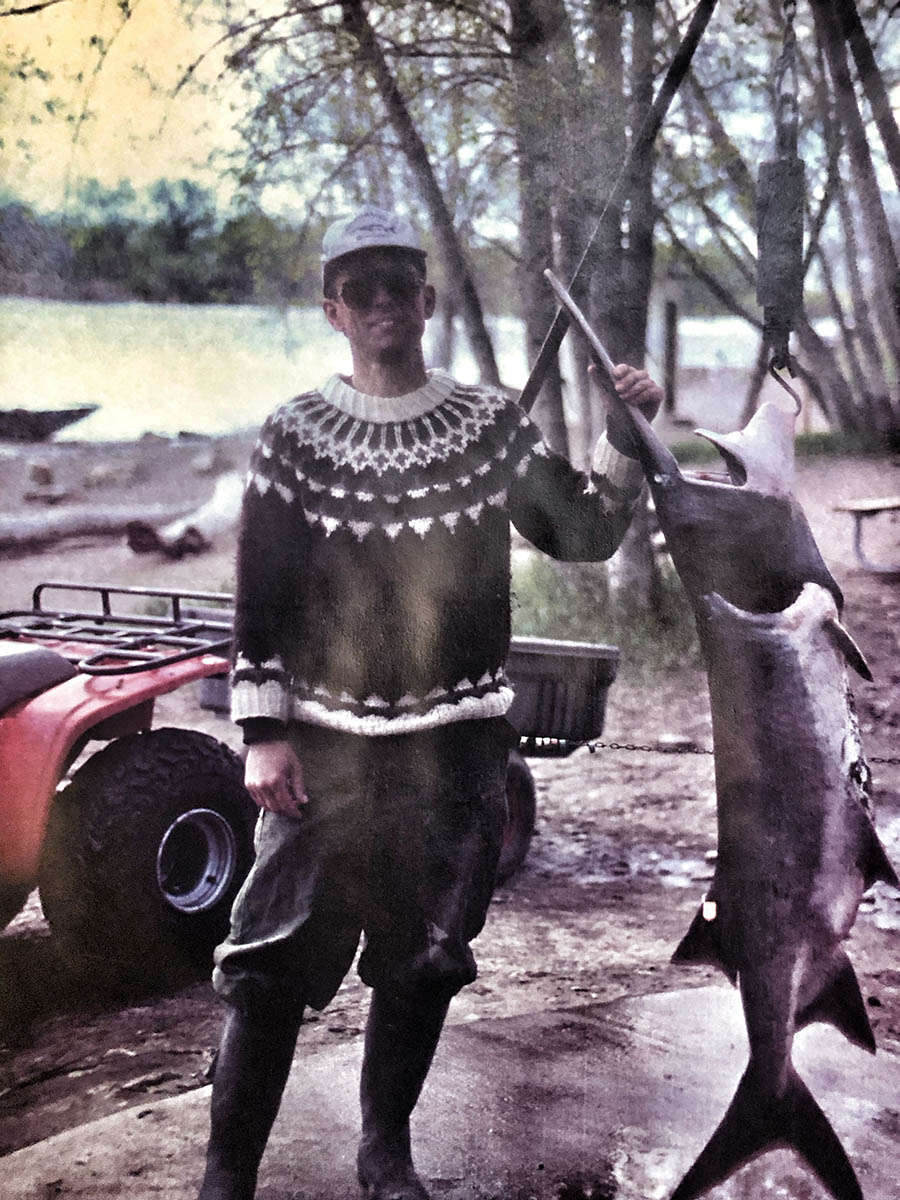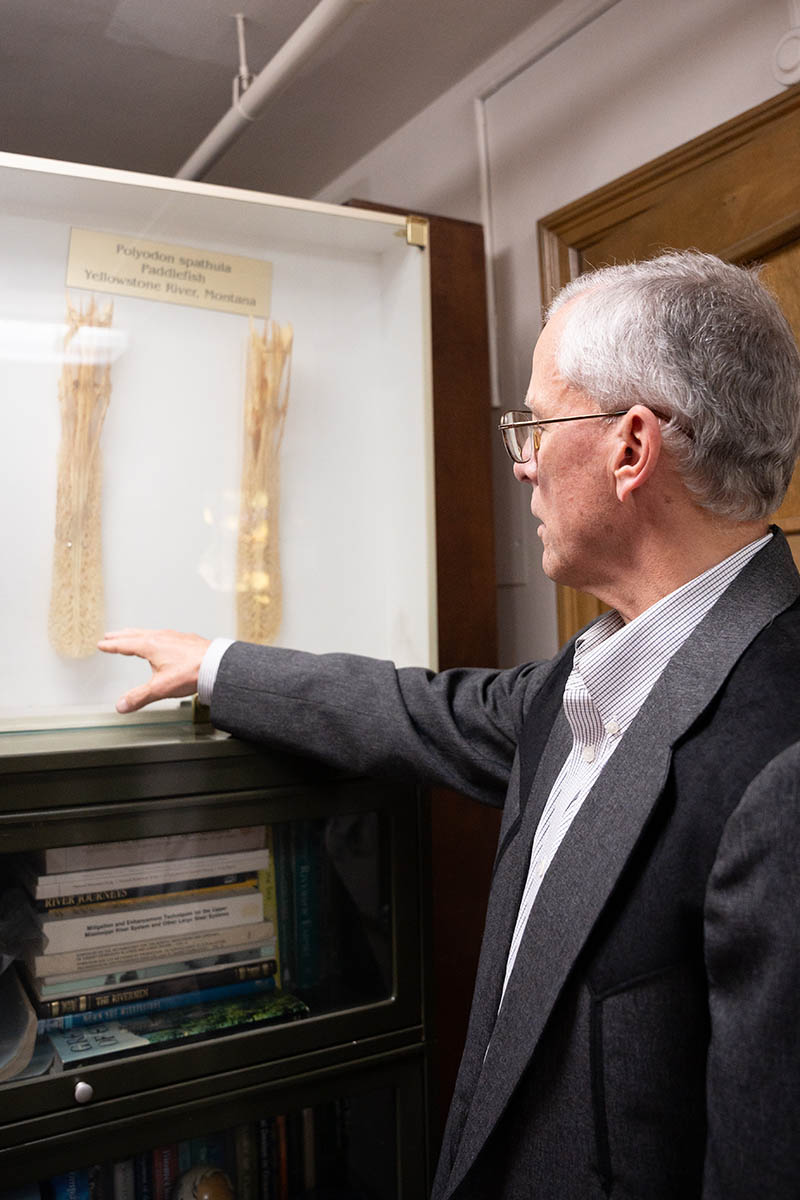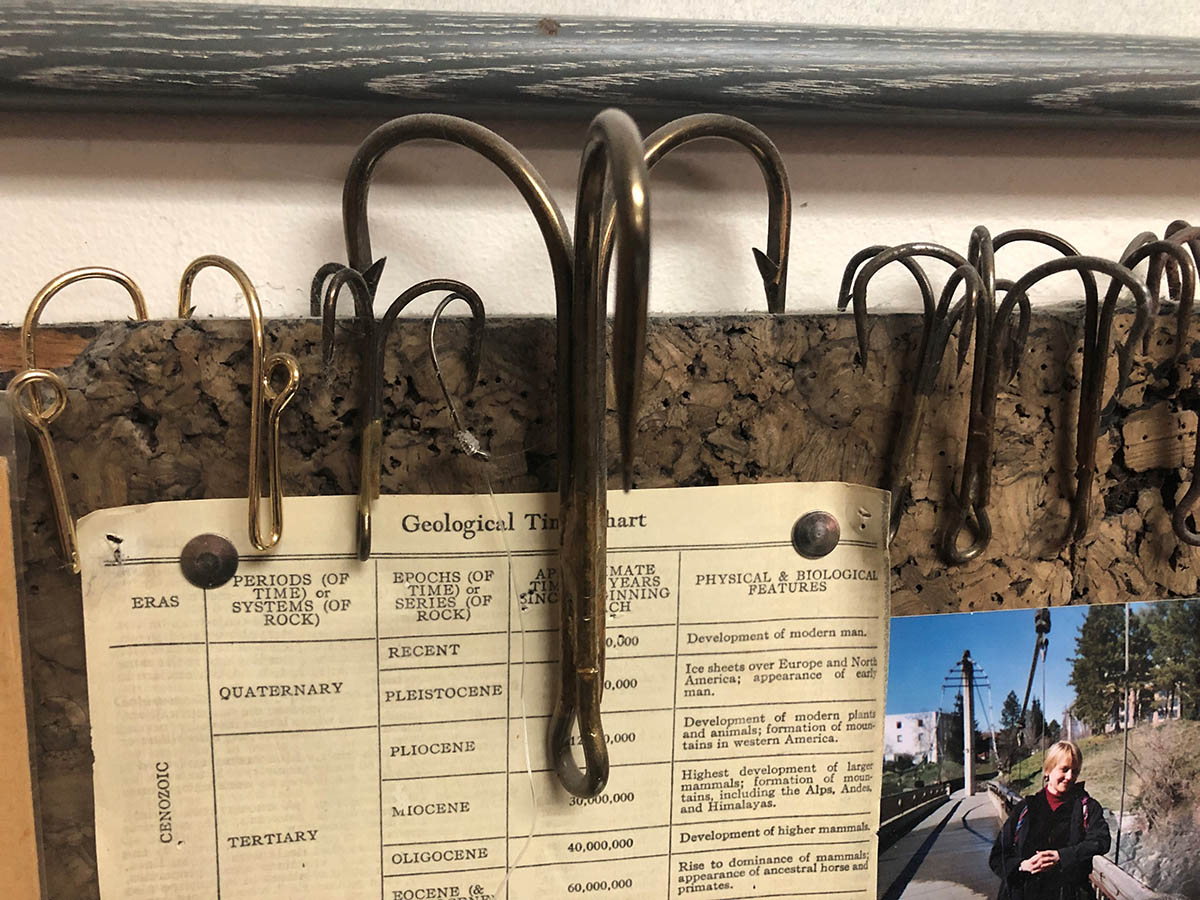Preserving the Prehistoric
U of I Fisheries Lab Focuses on Undesirable Species
Dennis Scarnecchia sat in a johnboat in the main channel of the upper Mississippi River south of Dubuque, Iowa, decades ago when he was introduced to “gar bending.”
Anglers who caught long or short nose gar, a toothy prehistoric predator, gingerly retrieved the fish from the murky water and pressed their palms on the fish’s snout and spine.
Pressure was applied until the gar’s vertebrae snapped, which sounded to Scarnecchia “much like a green stick being broken.”
We are the epicenter of this research. Dennis Scarnecchia, Fisheries Professor
The dead or dying fish “was then sloughed over the gunwale and sank out of sight in the turbid water,” Scarnecchia recounted in a journal article.
The incident almost 40 years ago was among many that cemented Scarnecchia’s devotion to North America’s ancient and indigenous fish species that include gar and bowfin – two related species that can gulp air – and paddlefish.

Volumes of Research
Since that time, Scarnecchia’s University of Idaho fisheries lab has contributed an extensive volume of articles and papers on the life histories and management of native ancient fish. His research has helped the public understand that fish previously regarded as “junk” or nuisance fish are species worth saving and managing.
“People don’t realize that right here at the University of Idaho, we are the epicenter of this research,” Scarnecchia said. “We are the storehouse of all this information and when it comes to these primitive fish, others call us for expert opinions and advice."
One of Scarnecchia’s publications, a 1992 article about gars and bowfin that appeared in “Fisheries,” is the most cited article on the species today.
“We're not just involved in this,” he said. “We are the nation’s leader in this stuff.”
Since arriving on Moscow in 1990, Scarnecchia, a professor of fisheries, has done more than his share of research on iconic species from bull trout, Redband trout, and Kokanee in Idaho to Chinook and Coho salmon in Oregon, and Atlantic salmon in Iceland. Scarnecchia’s most enduring contribution however is the work on ancient, lesser-known fishes in the Missouri and Mississippi river basins, including paddlefish and gars.
Paddlefish are a prehistoric filter feeder native to the continent’s slow, warm waters from eastern Montana to Oklahoma. Its ancestors are found in fossil beds from the age of dinosaurs. The fish are targeted, using big snagging hooks, by anglers who appreciate paddlefish as an anomaly. Because the fishery in many states was unregulated, the primordial species needed research attention to ensure its long-term survival, Scarnecchia said.

Caviar Helps Fund Research
He began radio-tracking paddlefish in the mid-1980s in the Upper Mississippi River south of Dubuque, Iowa and, later, helped develop a U of I-based research program that studies and provides management advice on paddlefish populations in Montana, North Dakota and Oklahoma.
The programs allowed anglers to get their recreationally-snagged fish cleaned for free by biologists in exchange for a donation of the roe, or eggs, from female fish harvested. The roe was processed — screened, salted, rinsed — into valuable, sturgeon-grade caviar.
Funds from caviar sales led to community and regional grants with a portion used for paddlefish research and management. Scarnecchia became a primary research arm of the program. He received an American Fisheries Society’s award of excellence for his involvement in paddlefish research throughout the basin. He is currently coordinating a national management plan for paddlefish for 26 of the Mississippi River basin states. “We’ve literally created our niche with these fishery studies,” Scarnecchia said.
In a more recent project, Scarnecchia and his small team of researchers have helped game departments set limits on bowfishing, a sport that is becoming popular throughout the United States. In bowfishing, archers sneak up on fish, such as buffalo, gar or suckers, in shallow water or while they idle near the surface and shoot them with arrows.
“Modern bowfishing, the taking of freshwater and marine fishes with a bow and arrow or crossbow, is widespread in North America and is regarded as one of the fastest growing types of recreational fishing in the United States,” Scarnecchia said.
The number of anglers pursuing the sport has doubled in recent years, and state fishery departments are often in the dark about the sport’s popularity and its effect on fishery resources.
In a 2021 article in “North American Journal of Fisheries Management,” Scarnecchia and colleagues showed that female indigenous fish, because they are larger than males, are often targeted by bow fishers, which may affect populations. Researchers also learned that bow fishers are more likely to eat their catch than rod and reel anglers.
Dennis Scarnecchia, Ph.D.
Professor of Fisheries Science and Management

Changing Public Perception
“Humans have a long history of testing novel fish for consumption,” Scarnecchia said. In another article in the same publication, due for release in 2023, Scarnecchia and colleagues found the commonly-held belief that fish shot with arrows can be released and usually survive, is not true. The findings will help game departments set regulations ensuring better survival of targeted fish species.
In Scarnecchia’s small office on the U of I campus hang pictures of paddlefish and anglers, prints of native North American fish, a paddlefish skull and stacks of books and journal articles neatly organized in overfull boxes — all signaling to visitors the office’s designation as epicenter of “junk” or “garbage” fish research in North America.
A change in public perception has been one of the benefits of the research, he said. “People are starting to look at these fish as an asset,” he said. “They are coming around to thinking that this is a valuable resource that needs to be managed just like the more popular gamefish.”
Shedding a positive light on the continent’s primitive water dwellers continues to be one of Scarnecchia’s passions.
“We’ve done some fascinating research,” he said. “I wouldn’t trade it for anything.”

Article by Ralph Bartholdt, University Communications.
Photos by Rio Spiering, University Visual Productions and Ralph Bartholdt, University Communications.
Published in October 2023.











